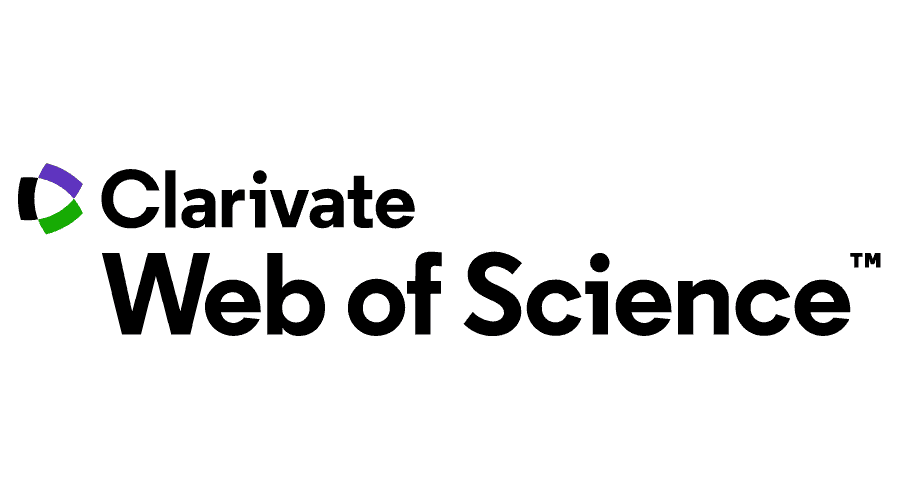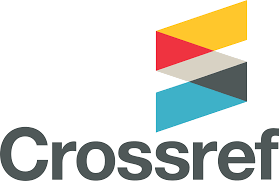Abstract
Research Aims: The present research aims to investigate factors that significantly influence customers’ behavioural intention to use digital banking products. Following prior work on social media marketing and the influence of conglomerate group benefits, in addition to providing a comprehensive understanding, the research incorporates three established theories: the Theory of Planned Behaviour, the Technology Acceptance Model, and the Unified Theory of Acceptance and Use of Technology.
Design/Methodology/Approach: The sample consists of current Allo Bank users. Data collection involved convenience sampling and a self-administered online questionnaire filled out by 262 respondents in Jakarta, Indonesia. The data analysis technique used was SEM PLS.
Research Findings: This study’s findings show that each hypothesis has positive and significant results.
Theoretical Contribution/Originality: This study explores the impact of conglomerate group benefits and the influence of social media marketing on consumers’ behavioural intention to use digital banking.
Managerial Implications in the South East Asian Context: This study offers insights on how to enhance the behavioural intention to use digital banking. It suggests that subjective norms can have a substantial impact, so encouraging more individuals to utilise digital banking can increase customers’ willingness to adopt. Furthermore, increasing sales promotions while enhancing the perceived behavioural control of customers can also significantly influence adoption.
Research Limitations & Implications: The research is constrained to digital banks belonging to conglomerates. This restriction overlooks various other factors that may impact the choice of utilising a digital banking product.
References
Adi, D. O. R. K., Fathoni, A., & Hasiholan, L. B. (2018). Pengatuh Kualitas Pelayanan, Harga Dan Promosi Terhadap Keputusan Pembelian Produk Cke Teknik Semarang. Journal of Management, 4(4).
Ajzen, I. (1991). The theory of planned behavior. Organizational Behavior and Human Decision Processes 50(2), 179-211.
Alam, M. Z., Alam, M. M. D., Uddin, M. A., & Mohd Noor, N. A. (2022). Do mobile health (mHealth) services ensure the quality of health life? An integrated approach from a developing country context. Journal of Marketing Communications, 28(2), 152-182.
Allcott, H. (2011). Social norms and energy conservation. Journal of Public Economics 95(9-10), 1082-1095.
Al-Mamary, Y. H., Al-nashmi, M., Hassan, Y. A. G., & Shamsuddin, A. (2016). Critical review of models and theories in field of individual acceptance of technology. International Journal of Hybrid Information Technology 9(6), 143-153.
Al-Swidi, A., Mohammed Rafiul Huque, S., Haroon Hafeez, M., & Noor Mohd Shariff, M. (2014). The role of subjective norms in theory of planned behavior in the context of organic food consumption. British food journal, 116(10), 1561-1580.
Andrade, C. (2020). The limitations of online surveys. Indian journal of psychological medicine, 42(6), 575-576.
Bagozzi, R. P., & Yi, Y. (2012). Specification, evaluation, and interpretation of structural equation models. Journal of the academy of marketing science, 40, 8-34.
Barbarossa, C., & De Pelsmacker, P. (2016). Positive and negative antecedents of purchasing eco-friendly products: a comparison between green and non-green consumers. Journal of Business Ethics 134, 229-247.
Beck, J., Rainoldi, M., & Egger, R. (2019). Virtual reality in tourism: a state-of-the-art review. Tourism Review 74(2), 586-612.
Benleulmi, A. Z., & Ramdani, B. (2022). Behavioural intention to use fully autonomous vehicles: Instrumental, symbolic, and affective motives. Transportation research part F: traffic psychology and behaviour, 86, 226-237.
Brahmana, R., Brahmana, R. K., & Memarista, G. (2018). Planned Behavior in Purchasing Health Insurance. The South East Asian Journal of Management 12(1), 53-64.
Chartier, J., Liu, A., & Lyon, S. (2020, February 11). Capturing cross-selling synergies in M&A. Retrieved from https://www.mckinsey.com/capabilities/m-and-a/our-insights/capturing-cross-selling-synergies-in-ma#/
Chemingui, H., & Ben Lallouna, H. (2013). Resistance, Motivations, Trust and Intention to Use Mobile Financial Services. International Journal of Bank Marketing 31(7), 574-592.
Chen, M. F., & Tung, P. J. (2014). Developing an extended theory of planned behavior model to predict consumers’ intention to visit green hotels. International journal of hospitality management, 36, 221-230.
Dean, M., Raats, M. M., & Shepherd, R. (2008). Moral concerns and consumer choice of fresh and processed organic foods 1. Journal of Applied Social Psychology, 38(8), 2088-2107.
Erjavec, J., & Manfreda, A. (2022). Online shopping adoption during COVID-19 and social isolation: Extending the UTAUT model with herd behavior. Journal of Retailing and Consumer Services, 65, 102867.
Etikan, I., Musa, S. A., & Alkassim, R. S. (2016). Comparison of convenience sampling and purposive sampling. American journal of theoretical and applied statistics, 5(1), 1-4.
Fornell, C., & Larcker, D. F. (1981). Evaluating structural equation models with unobservable variables and measurement error. Journal of marketing research, 18(1), 39-50.
Hair Jr, J. F., Howard, M. C., & Nitzl, C. (2020). Assessing measurement model quality in PLS-SEM using confirmatory composite analysis. Journal of Business Research, 109, 101-110.
Hair, J. F., Black, W. C., Babin, B. J., & Anderson, R. E. (2014). Multivariate data analysis (7th ed.). Harlow, Essex: Pearson Education Limited.
Hair, J. F., Risher, J. J., Sarstedt, M., & Ringle, C. M. (2019). When to use and how to report the results of PLS-SEM. European business review, 31(1), 2-24.
Hsu, C. L., Chang, C. Y., & Yansritakul, C. (2017). Exploring purchase intention of green skincare products using the theory of planned behavior: Testing the moderating effects of country of origin and price sensitivity. Journal of Retailing and Consumer Services, 34, 145-152.
Huang, Y. C. (2023). Integrated concepts of the UTAUT and TPB in virtual reality behavioral intention. Journal of Retailing and Consumer Services, 70, 103127.
Itani, O. S., & Hollebeek, L. D. (2021). Light at the end of the tunnel: Visitors' virtual reality (versus in-person) attraction site tour-related behavioral intentions during and post-COVID-19. Tourism Management, 84, 104290.
Kemp, S. (2022, February 15). Digital 2022: Indonesia. Retrieved from https://datareportal.com/reports/digital-2022-indonesia
Kusnandar, V. (2022, 06 22). Transaksi Digital Marak, Jakarta Dominasi Sebaran Uang Elektronik Terdaftar di Indonesia. Retrieved from https://databoks.katadata.co.id/datapublish/2022/06/22/transaksi-digital-marak-jakarta-dominasi-sebaran-uang-elektronik-terdaftar-di-indonesia
Lee, D., Hosanagar, K., & Nair, H. S. (2018). Advertising content and consumer engagement on social media: Evidence from Facebook. Management Science, 64(11), 5105-5131.
Lee, W. L., Liu, C. H., & Tseng, T. W. (2022). The multiple effects of service innovation and quality on transitional and electronic word-of-mouth in predicting customer behaviour. Journal of Retailing and Consumer Services, 64, 102791.
Leung, W. K., Cheung, M. L., Chang, M. K., Shi, S., Tse, S. Y., & Yusrini, L. (2022). The role of virtual reality interactivity in building tourists’ memorable experiences and post-adoption intentions in the COVID-19 era. Journal of Hospitality and Tourism Technology, 13(3), 481-499.
Loureiro, S. M., Cavallero, L., & Miranda, F. J. (2018). Fashion brands on retail websites: Customer performance expectancy and e-word-of-mouth. Journal of Retailing and Consumer Services, 41, 131-141.
Lu, J., Xiao, X., Xu, Z., Wang, C., Zhang, M., & Zhou, Y. (2022). The potential of virtual tourism in the recovery of tourism industry during the COVID-19 pandemic. Current Issues in Tourism, 25(3), 441-457.
Masuda, H., Han, S. H., & Lee, J. (2022). Impacts of influencer attributes on purchase intentions in social media influencer marketing: Mediating roles of characterizations. Technological Forecasting and Social Change, 174, 121246.
Merkx, C., & Nawijn, J. (2021). Virtual reality tourism experiences: Addiction and isolation. Tourism Management, 87, 104394.
Nekmahmud, M., Naz, F., Ramkissoon, H., & Fekete-Farkas, M. (2022). Transforming consumers' intention to purchase green products: Role of social media. Technological Forecasting and Social Change, 185, 122067.
Paul, J., Modi, A., & Patel, J. (2016). Predicting green product consumption using theory of planned behavior and reasoned action. Journal of retailing and consumer services, 29, 123-134.
Ramkissoon, H., Smith, L. D. G., & Weiler, B. (2013). Testing the dimensionality of place attachment and its relationships with place satisfaction and pro-environmental behaviours: A structural equation modelling approach. Tourism management, 36, 552-566.
Rashid, N. R. N. A., Jusoff, K., & Kassim, K. M. (2009). Eco-Labeling Perspectives amongst Malaysian Consumers. Canadian social science, 5(2), 1-10.
Sarwono, J. (2006). Metode Penelitian Kuantitatif dan Kualitatif. Yogyakarta: Graha Ilmu.
Setiawan, R., Eliyana, A., Suryani, T., Aristo, E., & Anwar, A. (2022). A Study of Behavioral Intention: The Practices for Mobile Payment Technology Users in Indonesia. Webology 19(2), 2364-2381.
Singh, S., & Sagar, R. (2021). A critical look at online survey or questionnaire-based research studies during COVID-19. Asian Journal of Psychiatry, 65, 102850.
Sun, Y., & Wang, S. (2020). Understanding consumers’ intentions to purchase green products in the social media marketing context. Asia pacific journal of marketing and logistics, 32(4), 860-878.
Talwar, S., Kaur, P., Nunkoo, R., & Dhir, A. (2022). Digitalization and sustainability: Virtual reality tourism in a post pandemic world. Journal of Sustainable Tourism, 1-28.
Tang, D., Gong, X., & Liu, M. (2022). Residents’ behavioral intention to participate in neighborhood micro-renewal based on an extended theory of planned behavior: A case study in Shanghai, China. Habitat International, 129, 102672.
Wu, X., & Lai, I. K. W. (2021). The acceptance of augmented reality tour app for promoting film-induced tourism: the effect of celebrity involvement and personal innovativeness. Journal of Hospitality and Tourism Technology, 12(3), 454-470.
Yadav, R., & Pathak, G. S. (2017). Determinants of consumers' green purchase behavior in a developing nation: Applying and extending the theory of planned behavior. Ecological economics, 134, 114-122.
Recommended Citation
Basoeki, Jonathan Bagus Pradhana and Agus, Anna Amalyah
(2023)
"Understanding the Role of Social Media Marketing and Technology Adoption Model in Shaping Customer Adoption of Digital Banking,"
The South East Asian Journal of Management: Vol. 17:
No.
2, Article 3.
DOI: 10.21002/seam.v17i2.1380
Available at:
https://scholarhub.ui.ac.id/seam/vol17/iss2/3
Included in
Management Information Systems Commons, Management Sciences and Quantitative Methods Commons













